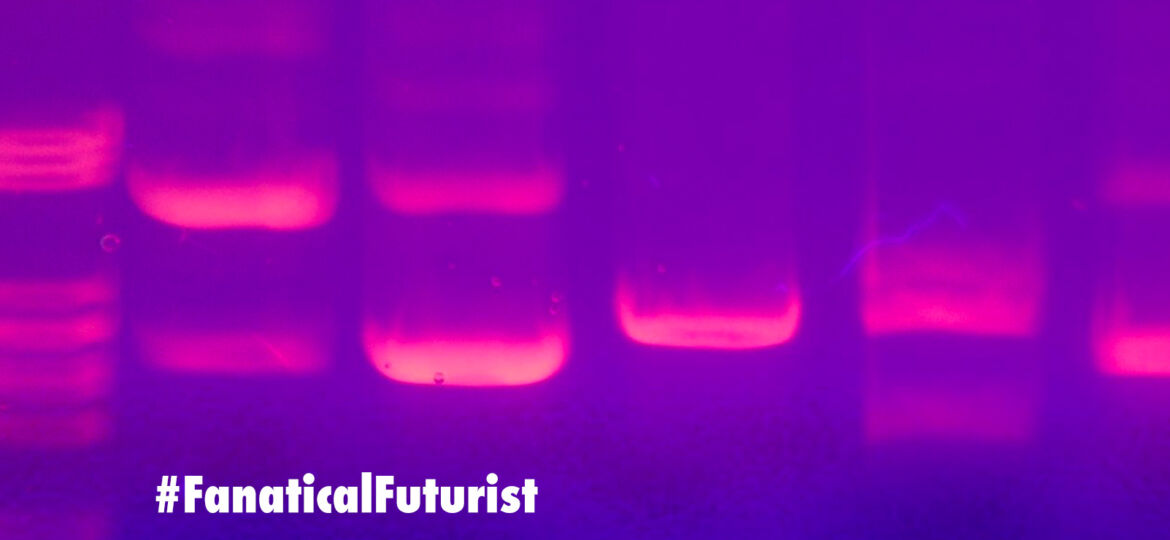
WHY THIS MATTERS IN BRIEF
Logic gates are a crucial component of today’s modern computing platforms, and creating ones using nothing more than DNA will help herald in a new era of immensely powerful biological computers.
DNA based logic gates, small computing devices which “perform logical operations on one or more binary inputs,” that could carry out calculations inside the human body, or any living organism for that matter, have been constructed for the first time, and the work brings to life the prospect of one day being able to create injectable Biological computers that are programmed to identify, target and kill diseases within the body in real time as they appear.
“The [future] biocomputer would sense biomarkers [in the body] and immediately react by releasing counter-agents for the disease,” says Itamar Willner of the Hebrew University of Jerusalem, Israel, who led the work.
The new logic gates are formed from short strands of DNA and their complementary strands, which in conjunction with some simple molecular machinery mean they’re able to mimic their much more popular and well known electronic computer equivalents – transistors. In the teams latest experiment two DNA strands act as the input and each one represents a 1 when present, or a 0 when absent. The response to their presence or absence represents the output, which can also be a 1 or 0 – the DNA equivalent of today’s binary computer platforms.
Take the “exclusive OR,” or XOR gate, logic gate for example. It produces an output when either of the two inputs is present but not when both are present or both are absent. To put the DNA version to the test, Willner and his team added molecules to both the complementary strands that caused them to fluoresce when each was present in isolation, representing a logical 1 as the output. But when both were present, the complementary strands combined and quenched the fluorescence, representing a 0 output.
One of the advantages of a DNA based Biocomputer is that it allows calculations to be carried out in parallel, if different types of logic gates are represented by different ingredients. The team tested this process by tossing the XOR ingredients into a test tube, along with those for two other gates, to produce the first few steps involved in binary addition and subtraction.
The team was also able to create logic gates that calculate in sequence. The trick here is to make the output from the first gate a new DNA string that can be used as the input for a second gate and so on. Such “Cascading gates” allow for more complex calculations such as the entire set of steps required for addition and subtraction, for example, or to deliver a multi-step drug treatment.
Previous DNA based Biocomputers tended to slow down at each step as the DNA strands were used only once, and so became depleted with time. One significant advance claimed by Willner and his team is that their DNA strands reform after each step, allowing long sequences of calculations to be carried out easily for the first time.
Even a single logic gate could have useful medical applications, Willner says. His group built and tested a gate designed to reduce the activity of the blood-clotting enzyme thrombin, which can lead to brain damage following a head injury. The gate acts as a switch that is triggered by the presence of thrombin. Part of the gate consists of a DNA strand connected to a molecule that binds to thrombin. If thrombin is present, this molecule is released, otherwise it stays bound and inert. Such a smart drug could be injected into the bloodstream in advance and would only switch on when needed.
Another problem with earlier Biocomputers is that they use enzymes to manipulate the DNA, and so function only in certain chemical environments that cannot easily be reproduced inside the body, and today Willner’s team used DNA-like molecules to do this job instead.
“Being enzyme-free, it has potential in future diagnostic and medical applications,” says Benny Gil of the Weizmann Institute of Science in Rehovot, Israel, who’s impressed with the new gate system but recognises that it will take years of research and development to create truly “smart drugs” that leverage the technology to benefit medicine.
















